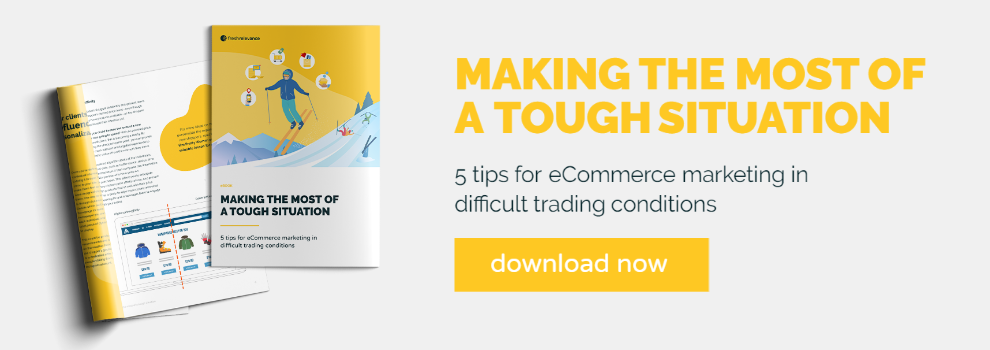Recently, BBC’s Amazon: What They Know About Us and Channel 4’s The Truth About Amazon provided us with their take on the omnipresent retail giant. What both TV programmes had in common was their focus on Amazon’s rise to corporate superpower and our growing reliance on Amazon, raising the question whether there is a dark side to our love affair with the company.
Amazon has had its fair share of criticism over the years and a number of points raised should not be dismissed lightly. The safety of its staff in fulfilment centres both pre and during COVID-19, potential quality issues of products sold on Marketplace and the level of care Amazon takes with the customer data it holds are all matters that should not be ignored.
However, there is also a lot we can learn from the company, in particular when it comes to being a customer-centric, data-driven organization. These are fundamental aspects of any successful personalization strategy and will now more than ever play a crucial role.
The COVID-19 pandemic drastically impacted consumer shopping habits and online retail has clearly been able to benefit from this trend. With physical stores closed, more and more consumers headed online to purchase items. Ecommerce brands selling products supporting life at home, such as toys, films and home gym equipment, were the particular winners of the lockdown, with revenues doubling or even quadrupling. As a whole, online retail grew by 59% between March and May.
Amazon itself became a lifeline to many during this time. The retailer reported a 26% YOY sales increase in the first three months of 2020 and even had to introduce a policy prioritizing “essential” products to ensure timely delivery.
We now look towards the future – and whilst this brings the return of some familiar habits and behaviors, many aspects of life are set to have changed. It’s likely we’ll have to face tougher trading conditions for some time as the global economy continues to be impacted by the crisis.
As such, it’s important for brands to get one step ahead. Looking to Amazon can provide an indication of the eCommerce strategies that will deliver the greatest ROI. In this article, I’ll explore three marketing tactics the retailer does well and how to take them to the next level.
1) Website navigation
Amazon’s success follows the age-old truism of good customer service – listening to the customer to provide them with what they want. Very early on, Amazon recognized the importance of delivering personalized experiences to customers. “If we want to have 20 million customers, then we want to have 20 million stores. Our mission is to be the earth’s most customer-centric company,” founder and CEO Jeff Bezos famously said in 2000.
And the company has certainly made large strides towards this goal over the years. Today, when a customer logs on, every element of the homepage is tailored to their preferences – whether that be previously purchased items available for repurchase, viewed or saved items, relevant Amazon deals and seasonal events. It makes the customer’s life easier and is likely to get the purchase across the line quicker.
Yet, the website navigation bar, which is exactly the same for every visitor, looks like a missed opportunity. Personalizing the website navigation by prominently displaying the shopper’s favorite categories or by including personalized product recommendations in the nav bar dropdown will make it even easier for the customer to find items they might like quickly.
Learn more: 11 examples of website navigation bars with dynamic content
2) Product recommendations
Amazon aims to create tailored online experiences that not only reflect a customer’s tastes and preferences, but also anticipates their needs. Their recommendation engine plays a key role here and is by far the most famous element of the company’s personalization efforts. Product suggestions are practically everywhere across the website and emails, taking various shapes and forms.
Interestingly, there are a few white spots in the retailer’s recommendations strategy, neglecting proven strategies to upsell or rescue a sale. Amazon neither serves exit intent overlays with product recommendations nor recommends add-on products to increase cart size during checkout.
Also, the displayed product recommendations often don’t feel 100% relevant. Personally, there’s usually only one thing that I might want from the items displayed on the homepage. The rest is adverts for Amazon’s other brands and repeats of products that I’ve already bought. Amazon is famously good at analyzing the data they collect, but they sell such a vast range of products that they can’t optimize for just one sector. This can give more focused retailers an edge.
So how can you make product recommendations more effective? Experiment by mixing and matching different recommendations types to find the winning formula for your business. This could be a mix of crowd-sourced elements, such as product popularity and ratings, with personalized factors, such as the individual’s browsing and purchasing behaviour. It’s also important to make sure that the recommendations support your unique goals, such as selling out-of-season inventory or improving profit margins.
Learn more: 8 product recommendation examples for every stage of the customer journey
3) Checkout
Back in 2000, Amazon’s one-click checkout was such a game-changer that the retailer even decided to have it patented. The retailer has an impressive arsenal of strategies and tactics to optimise the checkout. The experience is simple and user-friendly – shipping costs are transparent, it lets users alter and edit product quantities without leaving the page, and allows them to set default settings for ease of future checkout.
Amazon uses many effective marketing techniques, such as 11 examples of website navigation bars with dynamic content – which generate a sales uplift of 5% on average – and price-drop emails. However, there are a number of proven marketing tactics which it doesn’t use, possibly because of its dominant position. For example, the retailer isn’t triggering cart abandonment emails when a shopper leaves the website without completing their purchase. This is money left on the table as cart abandonment emails generate a sales uplift of 7% on average. Also, these tactics are expected by many shoppers who may need a little extra incentive or a simple reminder to complete a purchase.
Amazon’s successes to build a customer-centric business are to be admired – something many others have attempted and will continue to attempt to emulate for many years to come. As retailers continue to face an increasing amount of pressure, those that take on some of the lessons we’ve learned from Amazon and harness the additional personalization opportunities will be better able to weather the storm.
This post originally appeared on Net Imperative.






